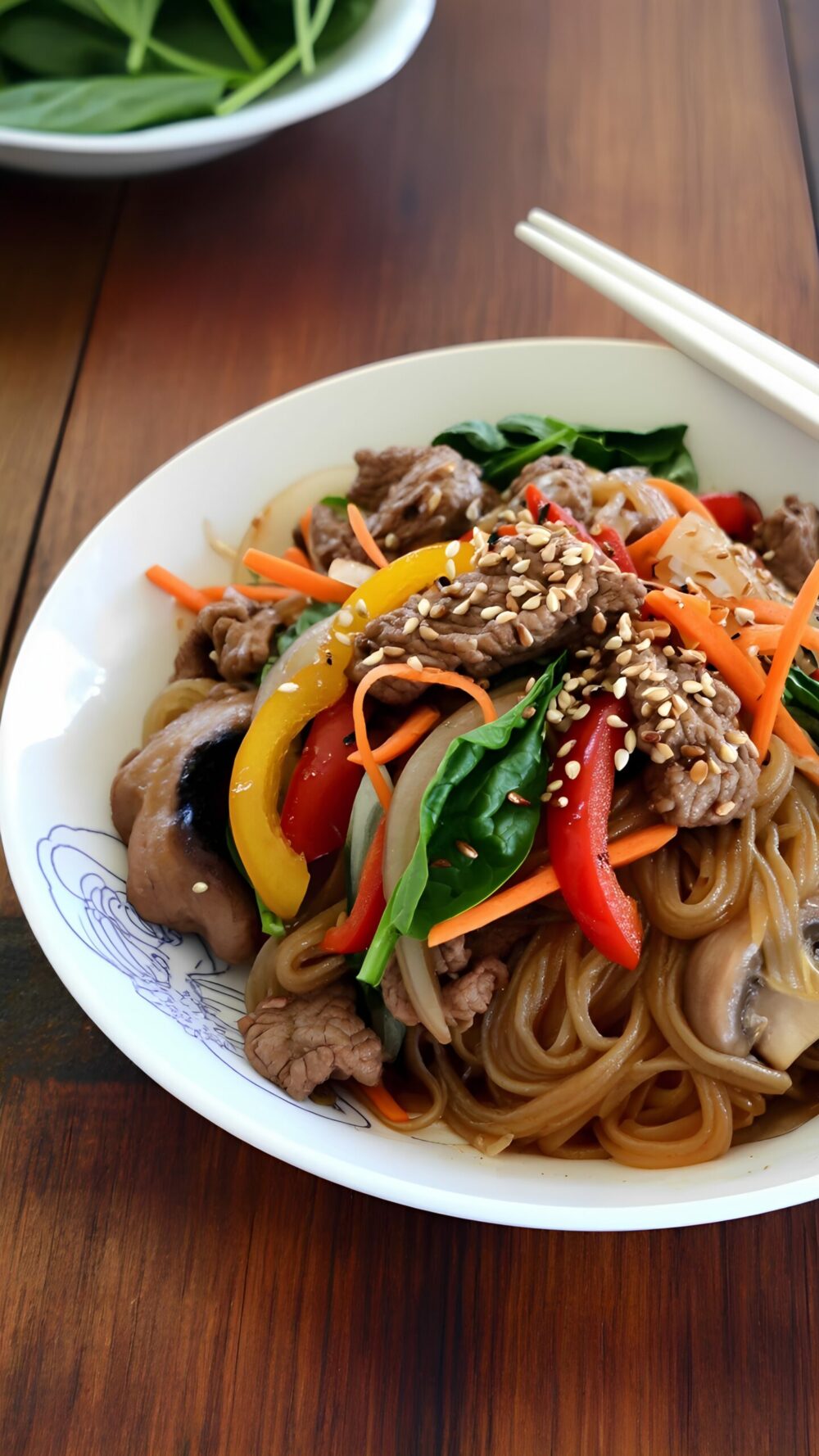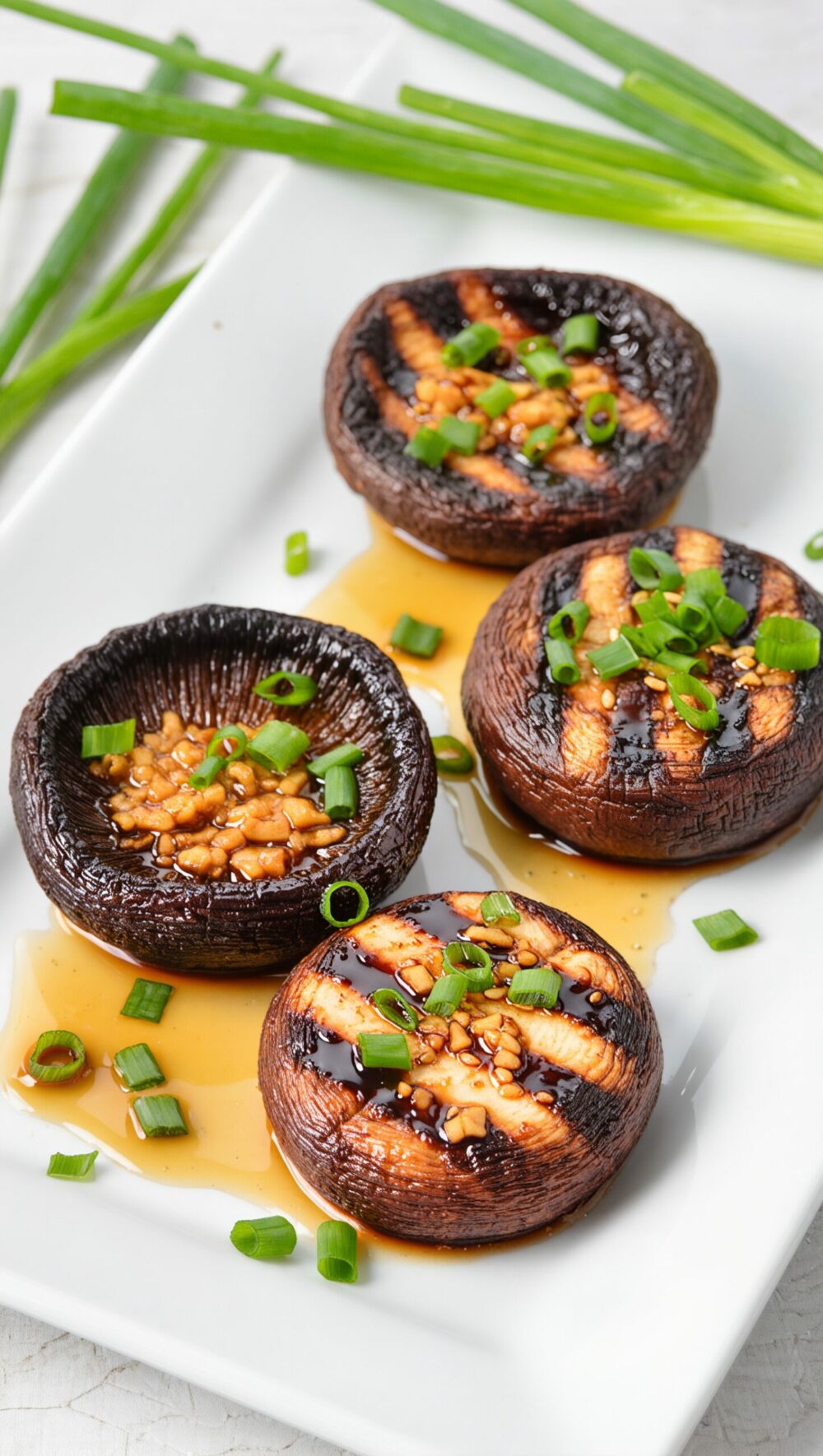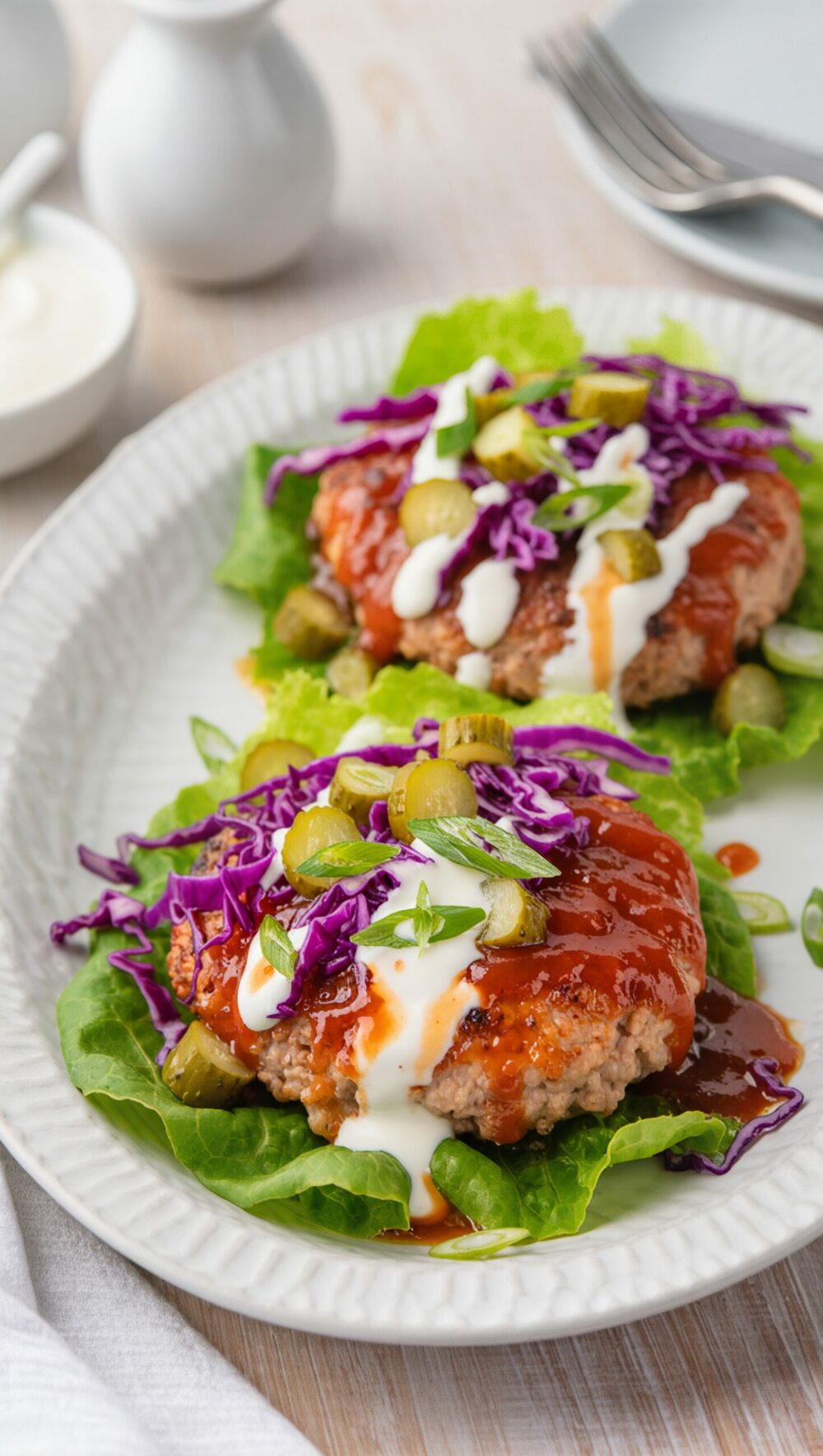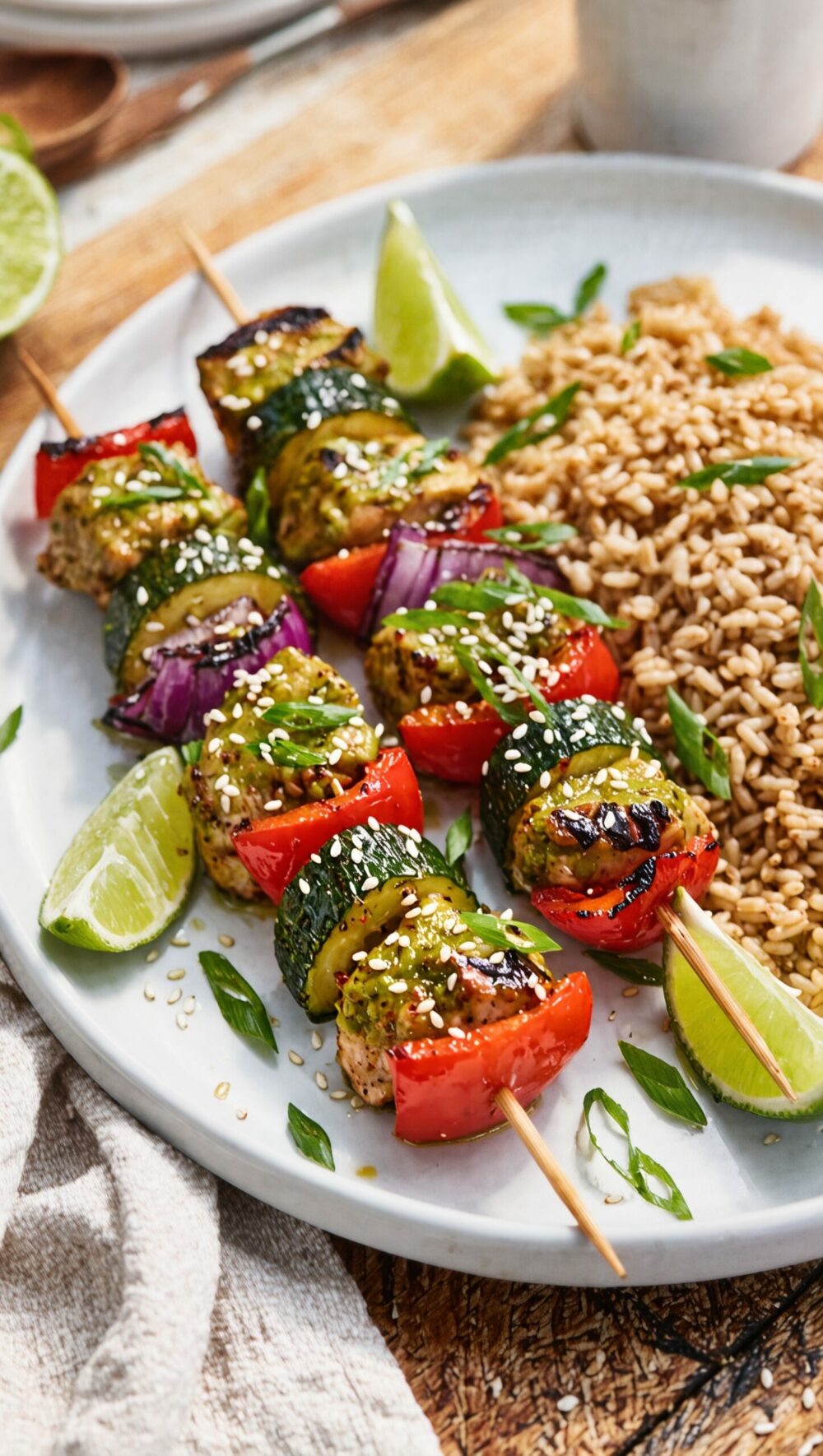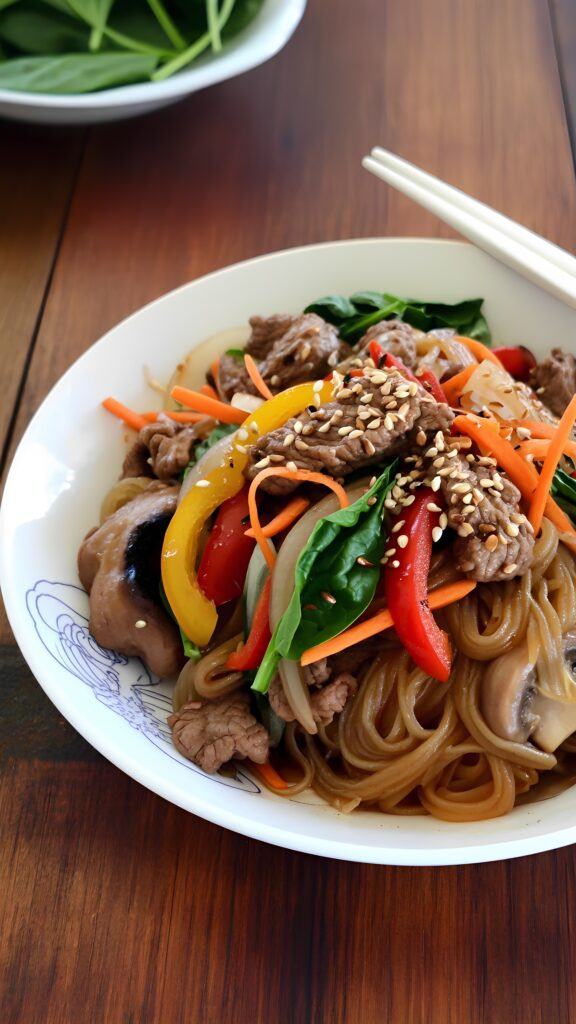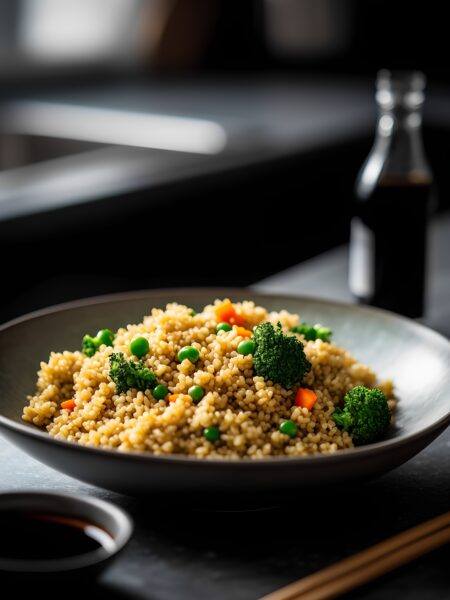Japchae is a delightful Korean noodle dish that blends vibrant vegetables with savory beef and glass noodles, all tossed in a subtly sweet and umami-rich soy sauce. It’s a dish that dances on the palate, offering a beautiful balance of flavors and textures.
Origins and Cultural Significance
Japchae has its roots in Korean royal cuisine, traditionally served during special occasions and celebrations. Originally, it was made without noodles, but over time, the introduction of sweet potato starch noodles, known as dangmyeon, became a beloved addition. This dish is often associated with festive gatherings, symbolizing prosperity and good fortune. It’s a staple of Korean cuisine that embodies the essence of harmony, bringing together different ingredients to create a symphony of flavors.
Unique Ingredients and Flavors
What makes Japchae truly special are its unique ingredients and the way they meld together. The star of the dish, dangmyeon, provides a chewy texture that contrasts beautifully with the crunch of fresh vegetables like carrots, spinach, and bell peppers. Thinly sliced beef adds a rich, savory note, while the soy sauce-based dressing, laced with garlic and sesame oil, imparts a depth of umami that is simply irresistible. Each bite is a delightful dance of flavors, from the sweetness of onions to the nuttiness of sesame seeds sprinkled on top. Cooking Japchae involves a medley of techniques, from stir-frying to blanching, ensuring that each element retains its distinct character while contributing to a harmonious whole.
Easy Korean Japchae Recipe – Authentic Glass Noodles
Description
Japchae offers a symphony of flavors with chewy sweet potato noodles, colorful veggies, and an irresistible soy-sesame dressing. Simple to make, yet utterly satisfying.
Ingredients
Noodles and Vegetables
Protein
Sauce and Seasonings
Instructions
Preparing the Ingredients
-
Soak the Sweet Potato Noodles
Place the sweet potato noodles in a large bowl and cover them with warm water. Let them soak for about 30 minutes until they soften up.This soaking process ensures the noodles have a chewy, yet tender texture—a hallmark of great Japchae. -
Slice the Vegetables
Thinly slice the bell pepper, onion, and carrot into long, slender strips. Chop the spinach roughly and set aside.Uniformly sliced vegetables cook evenly and make the dish visually appealing. -
Prepare the Mushrooms
Clean the shiitake mushrooms with a damp cloth and slice them thinly.Avoid washing the mushrooms under running water to prevent them from becoming waterlogged.
Cooking the Noodles and Vegetables
-
Cook the Noodles
Bring a pot of water to a boil and cook the soaked noodles for 6-8 minutes until al dente. Drain and rinse under cold water.Rinsing the noodles with cold water stops the cooking process and keeps them from sticking together. -
Sauté the Vegetables
In a large pan or wok over medium-high heat, add a splash of oil and sauté the onion and carrot until they begin to soften. Add the bell pepper and mushrooms, cooking until tender.Don't overcrowd the pan; this helps the vegetables to cook evenly and maintain their vibrant color. -
Add the Spinach
Toss the spinach into the pan and stir for a minute until it wilts.Spinach cooks quickly, so keep an eye on it to avoid overcooking.
Bringing It All Together
-
Combine Noodles and Vegetables
Add the cooked noodles to the pan with the vegetables. Pour in soy sauce, sesame oil, and a pinch of sugar, tossing everything together to ensure even coating.The combination of soy sauce and sesame oil imbues the dish with its signature savory and nutty flavors. -
Finish with Garnishes
Sprinkle with sesame seeds and finely sliced green onions before serving. Toss gently to mix.These garnishes add a wonderful crunch and a pop of color, enhancing both texture and presentation.
Note
- Use sweet potato starch noodles for authentic texture; soak them in warm water until pliable to achieve the perfect chewiness.
- Toast the sesame seeds lightly to enhance their nutty flavor—this simple step makes a noticeable difference.
- If possible, opt for thinly sliced ribeye; if not available, substitute with tender cuts like sirloin, ensuring slices are against the grain.
- The key to vibrant vegetables is a quick stir-fry over high heat; they should be crisp yet tender, maintaining their bright color.
- Balance the soy sauce-based marinade with a touch of sugar and sesame oil to achieve the signature sweet-savory profile.
- When incorporating the noodles with the vegetables and meat, use tongs for even distribution, ensuring each bite bursts with flavor.
- For a vegetarian twist, substitute beef with tofu, ensuring it’s well-pressed to absorb the marinade.
- Japchae is versatile; feel free to add your favorite seasonal vegetables—bell peppers, shiitake mushrooms, or spinach are excellent choices.
- If preparing ahead, store components separately to prevent sogginess; combine just before serving for the freshest taste.
- Serve chilled or at room temperature as a refreshing dish, especially in warmer months; it’s adaptable to various serving styles.

